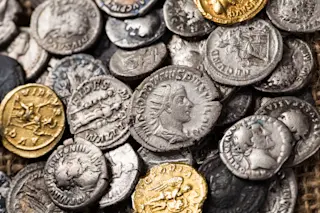Scientists today are searching for the "Golden Spike," evidence for the presence of man that will show up even hundreds of thousands of years from now. Such a marker would officially kick off the Anthropocene, the epoch of man, and candidates include the presence of radiation from nuclear bomb tests in geological samples and elevated levels of CO2 preserved in ice cores.
But even today, we can look back into the layers of Earth's past and see evidence of humanity. Researchers have peered into an ice core from Greenland and found that they can track the fortunes of the Roman Empire over a period of almost 2,000 years. Elevated levels of lead gave the Romans away — a byproduct of the silver smelting used to make their unique coinage.
The Romans, by proxy of lead, show up clearly in the ice, and fluctuations in the lead levels match up with ...














